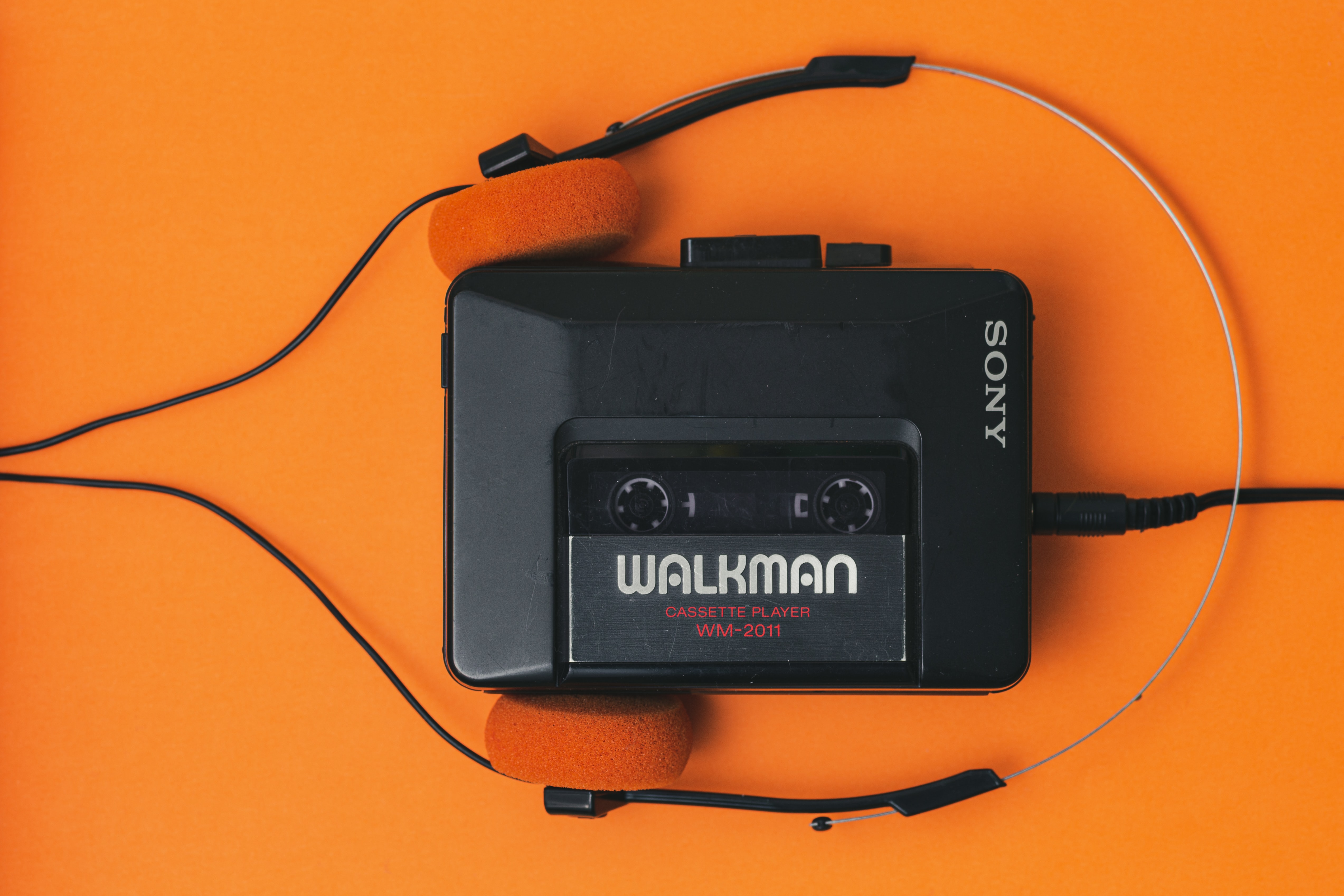The Walkman…
When the first Walkman model was created in 1979 it made an unprecedented crossover between individualized music and mobile music. Headphones already existed, but the devices they plugged into were stationary. Additionally, automobiles allowed for mobile music, but the listener was still separated from their environment by the body of their vehicle. The Walkman allowed for this personal music to be played anywhere, anytime, which was a bizarre concept for the time. Heike Weber’s chapter “Stereo City: Mobile Listening in the 1980s” from The Acoustic City, edited by Matthew Gandy and BJ Nilsen, speaks to the impact of this conceptual shift to privatized sound (2014, 156-163). Within cities, this mobile music provided listeners a way to escape the urban soundscape and privatize their aural environment.

Pictured is a Sony Walkman which revolutionized music consumption from a public to private experience.[1]Schmetz, Florian. The grandfather of the iPod. 18 Jan 2021. … Continue reading
…and its critics
The conceptual shift from collective to individual sound was not without its critics. Walkmans were originally a very generational technology, with the majority of its consumers being adolescents. Weber details how people apprehensive of the Walkman criticized the rising generation as being anti-social and unbothered (2014, p.159). After all, this was the first time the urban soundscape could be drowned out, and the thought of an isolated generation removed from their aural environment was frightening for many. People thought Walkman listeners had “paralyzed” and “blank” expressions as the music droned on in their ears (Weber, 2014, p.159). As the Walkman grew in popularity and prestige, normalizing itself as a tool of the commuter throughout the 1980s, not all mediums of individualized listening followed suit. The Walkman was seen as a more respectable way to consume music than the boombox, which many considered to be loud and obnoxious, and was more common among African-American youth, who viewed it as a means of self-expression (Weber, 2014, p.160). Infused with racism, this public music conflict permeated many American cities.
Mix Tapes: Roots in Piracy
Not only were cassettes and the Walkman transformative to music consumption, but they also introduced a new form of music recording. Cassettes allowed individuals to share music and curate their own listening experience, as people “started to massively prepare their own repertoire of music, which individualized their usages of mass media” (Pušnik, 2015, p.139). The mixtape, a compilation of individual songs, was a new concept which allowed for an expression of creativity and individuality. The private copying of music on blank cassette tapes became known as “home taping” and it challenged the music industry’s power over the consumer (Moore, 2004). In the 1980s, record labels in the United States “claimed that consumers were impinging upon the sales of pre-recorded vinyl records, cassette tapes and compact discs by privately copying music onto blank cassettes at home” (Bottomley, 2015, p. 1). The piracy of music through mix tapes on cassettes created a difficult reality for the recording industry, which was advanced by the popularity of the Walkman and accessibility to home taping.
References
| ↑1 | Schmetz, Florian. The grandfather of the iPod. 18 Jan 2021. https://images.unsplash.com/photo-1611001716885-b3402558a62b?ixlib=rb-1.2.1&ixid=MnwxMjA3fDB8MHxwaG90by1wYWdlfHx8fGVufDB8fHx8&auto=format&fit=crop&w=1740&q=80. |
|---|